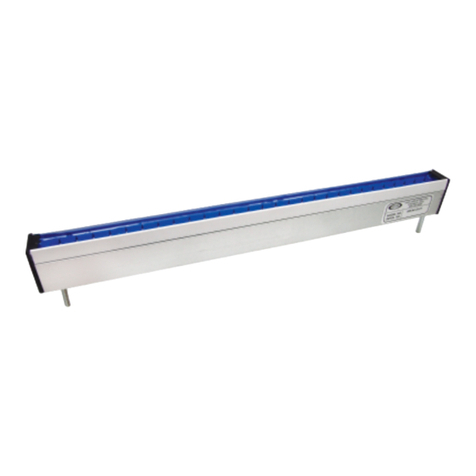
TAKK INDUSTRIES INCORPORATED
8665 E. Miami River Rd. Cincinnati, OH 45247 USA
Fax
(513)
353-4315
Phone
(800)
792-8255
or
(513)
353-4306
[email protected] www.takk.com
CHARACTERISTICS OF THE ELECTRIC FIELD
The electric eld has unusual characteristics, which should be understood when making electrostatic
measurements. These are noted below.
The electric eld lines of the static charge radiate vertically from the object. But they are easily distorted by
adjacent machinery parts. This is shown in the sketch below.
Rule: For a true reading, try to measure the object when it is in free air and away from machine parts. If this
is not possible, accept that the display is under-measuring the charge. This is an important factor when taking
readings in conned spaces.
This phenomenon is easier to understand if you charge a sheet of plastic by rubbing it. Then move the sheet
towards a wall, with the 5740 measuring the charge at all times. The reading will be about zero when the sheet
touches the wall, but will return to its previous level when the sheet is moved away.
The 5740 Static Meter is an invaluable tool in investigating industrial static electricity problems. It is used
throughout production and quality control. It helps the operator to analyze the problem scientically. For
example:
• Find out how much static is present.
• Establish standards of acceptability for static levels in processes.
• Reject material if it is too static generative.
• To see where and how the static is being generated.
• To see if static eliminators are effective and if they are in the best position.
Typical static levels:
1000V active dust attraction begins
3000V attraction of light materials eg 202u lm
3000V danger level in many hazardous areas in coating & gravure printing etc.
6000V attraction of heavier lm and papers and hairs on back of hand move
10,000V lm wraps around rollers and severe dust attraction occurs
eld lines
lm
eld becomes coupled
to roller and distorted
eld returns when
lm leaves roller
lm




















